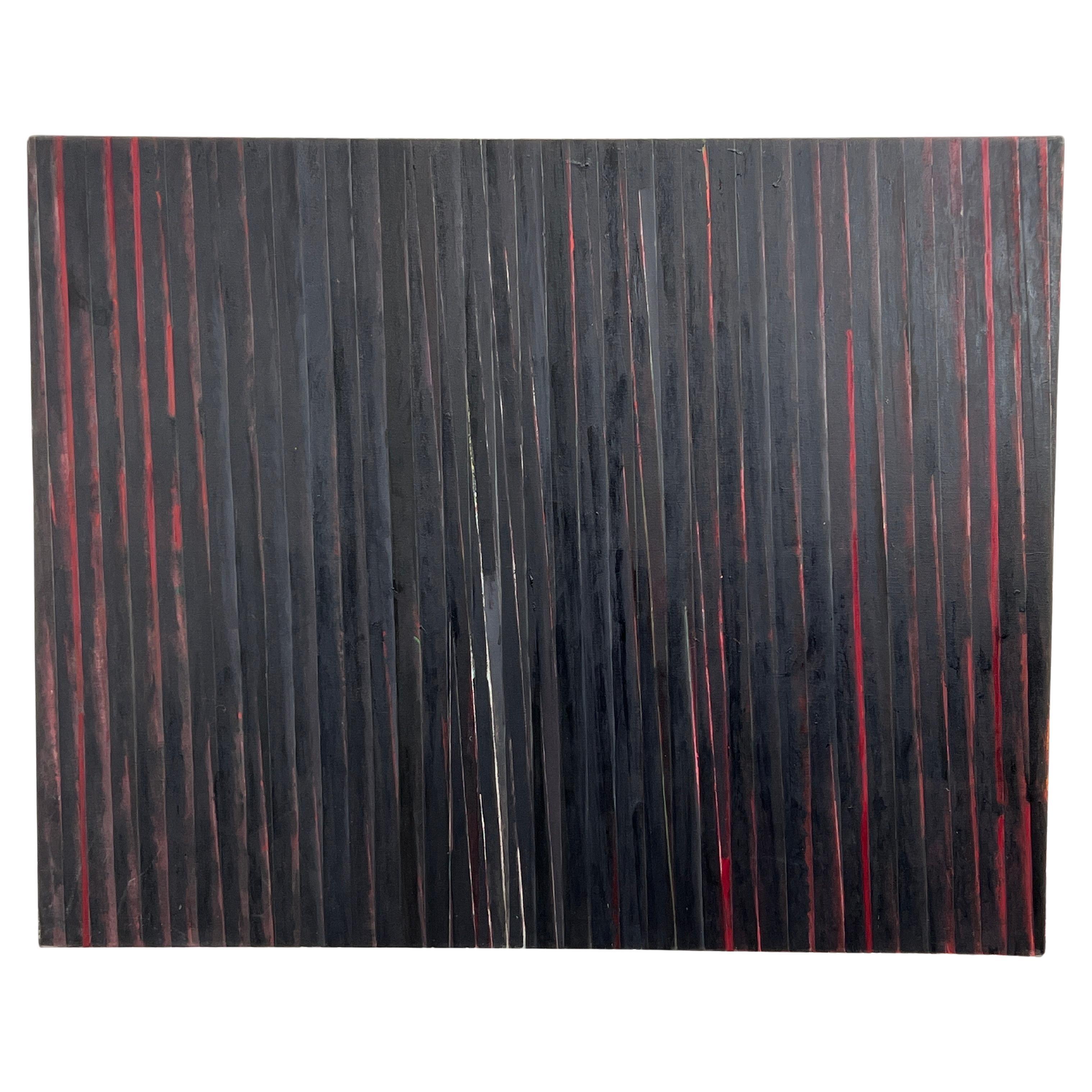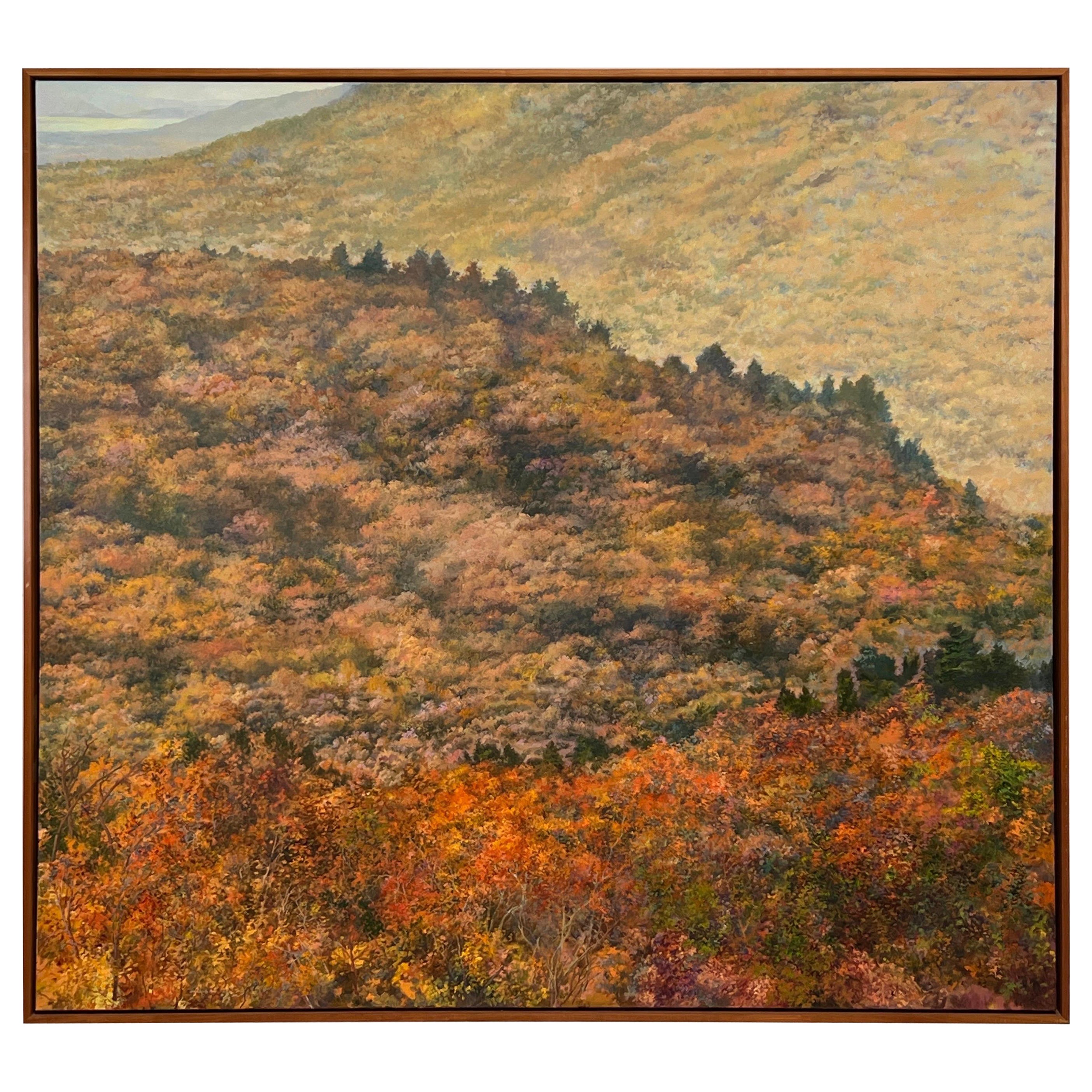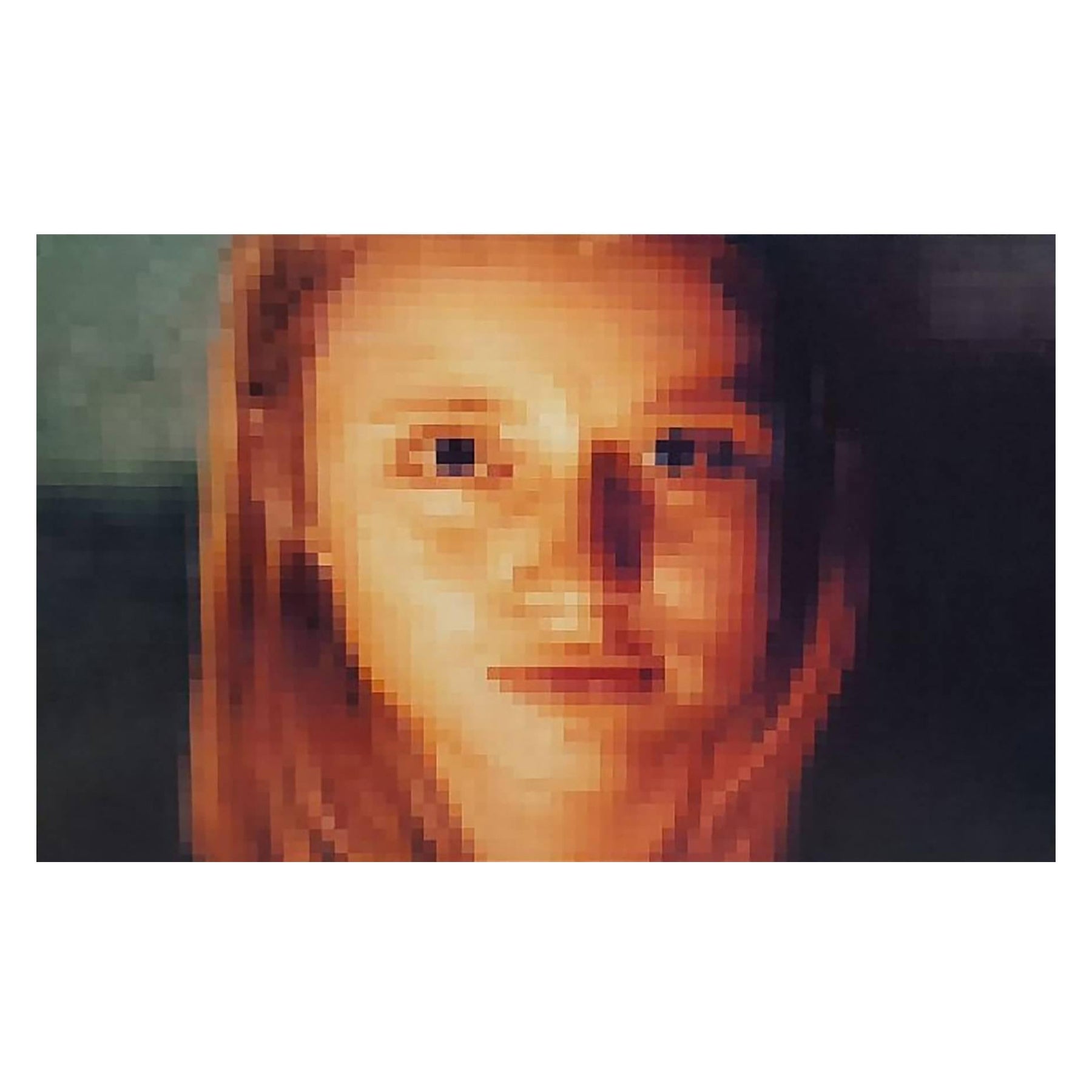Items Similar to 'Dragonfly Series #7', Painting by Douglas D. Craft
Want more images or videos?
Request additional images or videos from the seller
1 of 11
'Dragonfly Series #7', Painting by Douglas D. Craft
About the Item
At first glance Douglas D. Craft's (American, 1924-2015) Dragonfly series appears to be 3 dimensional, but it is merely a painterly illusion. 'Dragonfly #7' is a rhythmic repetition of vertical grey and black paint with red undertones, creating a calm, contemplative image. Craft's work resides in the permanent collections of the Museum of Modern Art, the Whitney Museum of American Art, the Art Institute of Chicago and the Smithsonian Institution in Washington, DC.
Provenance: From the GE Corporate Collection.
- Dimensions:Height: 48 in (121.92 cm)Width: 60 in (152.4 cm)Depth: 1 in (2.54 cm)
- Materials and Techniques:
- Place of Origin:
- Period:
- Date of Manufacture:1975-76
- Condition:Wear consistent with age and use.
- Seller Location:Dallas, TX
- Reference Number:1stDibs: LU851836686812
About the Seller
5.0
Recognized Seller
These prestigious sellers are industry leaders and represent the highest echelon for item quality and design.
Platinum Seller
These expertly vetted sellers are 1stDibs' most experienced sellers and are rated highest by our customers.
Established in 1999
1stDibs seller since 2008
449 sales on 1stDibs
Typical response time: <1 hour
- ShippingRetrieving quote...Ships From: Dallas, TX
- Return PolicyA return for this item may be initiated within 3 days of delivery.
More From This SellerView All
- 'Dragonfly Series #8', Painting by Douglas D. CraftLocated in Dallas, TXWhile Douglas D. Craft's (American, 1924-2015) Dragonfly series is textured in appearance, it is merely a painterly illusion. 'Dragonfly #8' is a rhythmic series of vertical black st...Category
Vintage 1970s American Paintings
MaterialsCanvas, Paint
- 'Off Little Tonche' Landscape Painting by Douglas James MaguireLocated in Dallas, TXWith his knowledge of the Luminist and Hudson Valley schools of 19th century American painting, Douglas James Maguire (American, b. 1940) gives...Category
1990s American Paintings
MaterialsLinen, Paint
- Abstract Painting by Lamar BriggsLocated in Dallas, TXKnown as an abstract colorist, Lamar Briggs (American, 1935-2015) began experimenting with acrylic paints in the early 1970's. In this undated work on paper he's thinned his medium d...Category
Vintage 1980s American Paintings
MaterialsPaint, Paper
- 'Salvage', Painting by Farrell BrickhouseLocated in Dallas, TX'Salvage' oil painting on assembled, salvaged wood, created by Farrell Brickhouse (American, b. 1949) in 1980. Signed, initialed and dated on reverse.Category
Vintage 1980s American Paintings
MaterialsWood, Paint
- Large Painting by Josko Eterovic, 1975Located in Dallas, TXA large oil on linen painting by Josko Eterovic, 1975.Category
Vintage 1970s Paintings
MaterialsCanvas
- Painting by Gerald Van De WieleLocated in Dallas, TXAcrylic on canvas painting by Gerald van de Wiele titled ' Ed Dorn in the field Waving' and dated 1962.Category
Vintage 1960s Paintings
MaterialsCanvas
You May Also Like
- Douglas Volk Original Small Oil PaintingLocated in Hopewell, NJBeautifully rendered small landscape on panel by Douglas Volk (February 23, 1856 – February 7, 1935), an American portrait and figure painter, muralist, and educator. He taught at t...Category
Vintage 1920s American Paintings
MaterialsWood
- Douglas Perez Castro Cuban Latin American PaintingLocated in Atlanta, GAOriginal oil painting on canvas by Douglas Perez Castro, Cuban, circa 2005. Castro’s works often focus on controversial issues within the Latin Am...Category
Early 2000s Cuban Modern Paintings
MaterialsCanvas, Wood
- Contemporary Oil Painting on Linen Areil in Candle Light by Douglas Leon CartmelBy Douglas Leon CartmelLocated in Dallas, TX'Areil in candle light' was painted with oil on linen from a portrait captured during a photography session with the model 'Areil' during which she held a candle in her hands to crea...Category
Early 2000s American Modern Contemporary Art
MaterialsLinen, Paint
- Huge Dimensional Oil Painting on Birch Box 'Oxide Red Cross' by Douglas CartmelBy Douglas CartmelLocated in Dallas, TXThis is a large-scale three-dimensional work by Texas Artist Douglas Cartmel. This work is inspired by the artist's swiss cross series. The geometry is a n...Category
21st Century and Contemporary American Modern Contemporary Art
MaterialsPaint
- Oil on Canvas Cityscape Painting of Rome, Italy by Listed Artist Douglas AtwillLocated in San Diego, CAOil on canvas cityscape painting of Rome, Italy by listed artist Douglas Atwill, circa 1990s. The piece has a photo quality about it in addition to wond...Category
20th Century American Paintings
MaterialsCanvas, Wood, Paint
- Mixed Media Painting by Steven Colucci, Sea SeriesBy Jackson PollockLocated in New York City, NYSteven Colucci’s iconoclastic approach to performance and the visual arts have not only long blurred the boundaries between these disciplines, but have challenged its most basic assumptions. The title of this show references a most rudimentary dance move -- the plié -- and our assumptions of what to expect in relation to this. Also the suggestion that we can simply press a button and a preconceived outcome will be courteously delivered -- a form of prefabricated belief in itself. Steven Colucci’s artwork turns such basic assumptions on their heads. Finding early inspiration in the New York school of abstract expressionists such as Jackson Pollock with his action painting, and then further by his professor -- a then young Vito Acconci while studying at the School of Visual Arts, Steven Colucci went from exploring the raw existentialist experimentation of New York’s early painting and performance scenes, to investigating the other end of the spectrum -- the rigorously measured and controlled disciplines of pantomime and ballet; studying in Paris under the tutelage of world-famous Marcelle Marceau, and engaging with the concepts of dramatic movement pioneer and intellectual Etienne Decroux. Colucci has explained the difference between the extremes of pantomime and dance as being that pantomime forces movement via an internal capacity -- movement directed inward to the core of one’s self -- a source requiring extreme mental and physical control. Dance by contrast is an external expression; likewise requiring great precision, although instead an extension of self or sentiment that projects outwardly. While such historical ‘movement’ disciplines serve as foundation blocks for Steven’s artistic explorations, it is the realm in between that he is best known for his contributions -- an experimental movement and performance art that simultaneously honors, yet defiantly refutes tradition; rejecting a compartmentalization regarding art and movement, yet incorporating its elements into his own brand of experimental pastiche. Colucci’s performance works manifest as eerily candy-coated and familiar, yet incorporate unexpected jags of the uncanny throughout, exploiting a sort of coulrophobia in the viewer; an exploration of a cumulative artifice that binds human nature against its darker tendencies; highlighting traditions of artifice itself -- the fabricated systemologies that necessitate compartmentalization in the first place. It is evident in Steven Colucci’s paintings that he has established a uniquely distinctive pictorial vocabulary; a strong allusion to -- or moreso an extension of -- his performance works. Colucci’s paintings depict a sort of kinetic spectrum, or as he refers to them “a technical expression of physicality and movement”. Whereas the French performance and visual artist Yves Klein used the human body as a “paint brush” to demarcate his paintings and thereby signify a residue of performance, Colucci’s utilization of nonsensical numbers and number sequences taken from dance scores, as well as heat-induced image abstraction depicting traces of movement likewise inform his vocabulary. In the strand of the choreographed, yet incorporating moments of chance, Colucci’s paintings represent an over arching structure; a rhythm of being and state, yet detail erratic moments -- moments that denote a certain frailty -- the edge of human stamina. Colucci’s paintings dually represent a form of gestural abstraction -- and also the reverse of this -- a unique anthropomorphization of varying states of movement -- that sometimes present as a temperature induced color field, at others are juxtapositions of movement and depictions of physical gestural images themselves. Colucci’s use of vernacular and found materials such as cardboard evoke his mastery of set design, and also reference a sort of collective experience of urbanity and the ephemeral. Such contradictions seem to permeate not only Steven Colucci’s artwork, but also are reflected in his person -- one who grew up in New York’s Bronx during a zeitgeist moment in visual and performing arts in the 1960s -- one who shifts with ease from happenings and experiments in New York City, to his meticulously choreographed megaproductions at Lincoln Center or starring in the Paris ballet...Category
2010s Paintings
MaterialsAcrylic





